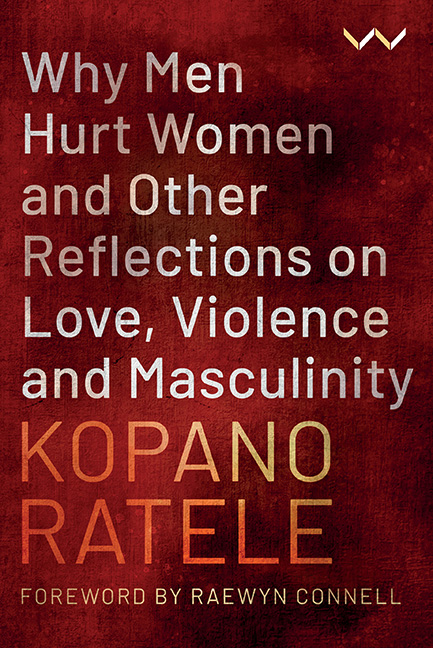27 - Trying to transform men is not a futile exercise, but it is slow and difficult work
Published online by Cambridge University Press: 24 November 2023
Summary
I live in a country in which violence is highly visible, and all too often gruesome, as were the murders in 2013 of 26-year-old Duduzile Zozo from Thokoza, Gauteng, who was killed and had a toilet brush stuck up her vagina, and Anene Booysen, a teenager from Bredasdorp in the Western Cape who was gang-raped and disembowelled.
And yet violence is also so banal.
It never stops.
I have tried to offer my small contribution – how interminable and even despairing and infinitesimal it often feels in the face of such horror – by discussing, teaching, conducting research and writing, with the aim of understanding the sources of men’s violence. I do this in the hope that we men, at least some of us, the ones who have used violence in the past, do so now, or will do so in the future, but who appear not to fathom its effects, might pause to reflect on this apparent attraction some of us have toward violence – if not for society, then for those we say we love and for ourselves.
The violence in our society, which means within us, within the self, is usually linked to the hegemonic understanding of what it means to be a man. Violence is a tool men use to reproduce their dominant manhood. But what they deploy far more often than violent behaviour is its unarticulated threat, which is present in the tacit right some men believe they have to dominate other people. Being a man of power, they believe, means being entitled to control others. The threat and the actuality of violence are ingrained in the currently culturally ascendant form of masculinity.
The link between manhood and violence is made in the National Strategic Plan on Gender-Based Violence and Femicide, to which I have referred in earlier chapters. In the Plan the terms ‘masculinity’ and ‘masculinities’ are mentioned more than 20 times. The ties between the two phenomena – masculinity/masculinities and violence – could not be clearer. The authors of the Plan see ‘ideas of masculinity that are centred on male control of women, male sexual entitlement, inequitable gender attitudes, risk-taking and antisocial behaviour’ as an interlinked set of factors in gender-based violence and femicide.
- Type
- Chapter
- Information
- Publisher: Wits University PressPrint publication year: 2022

